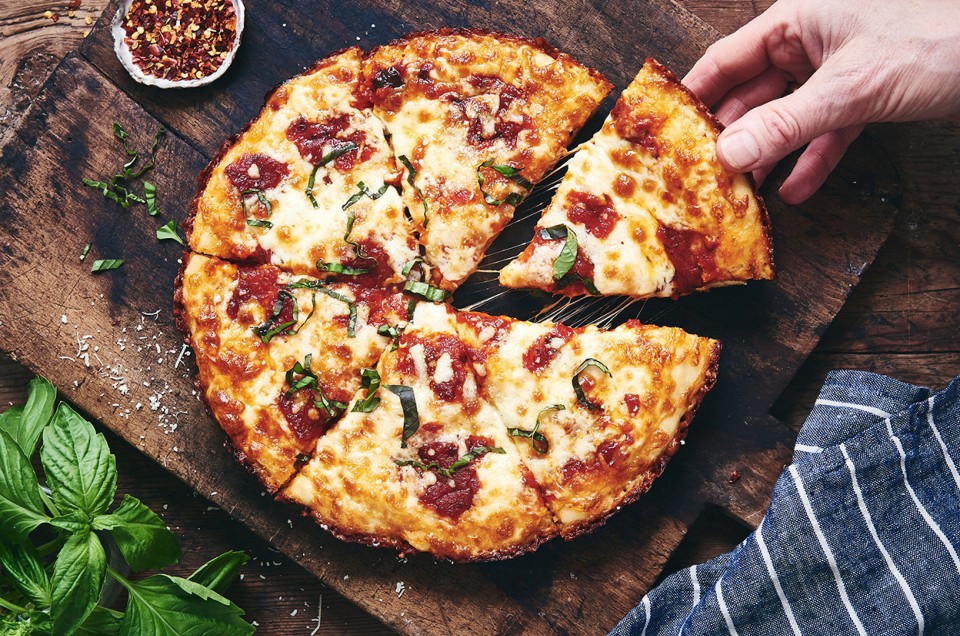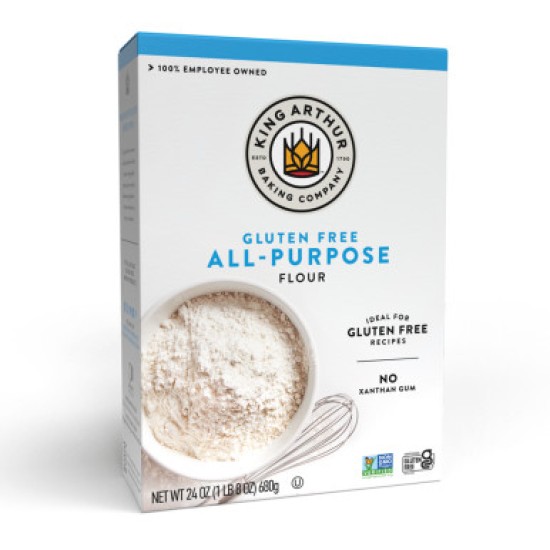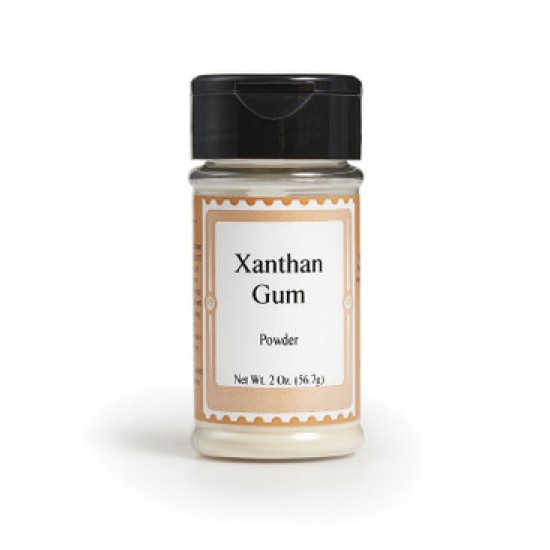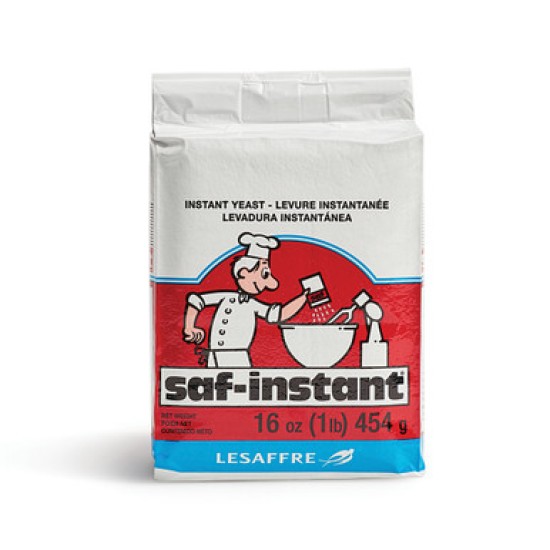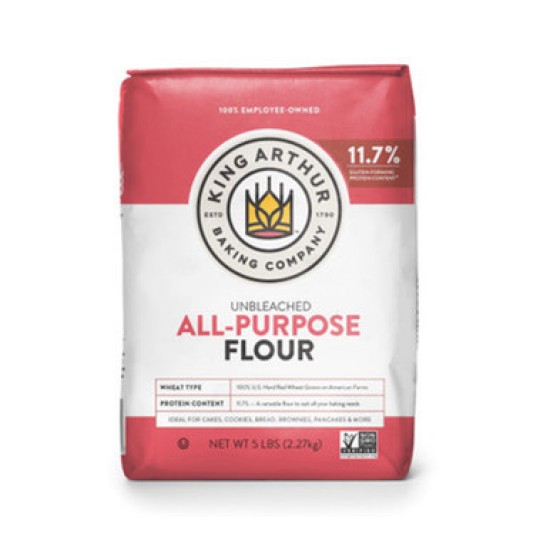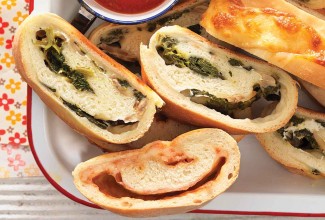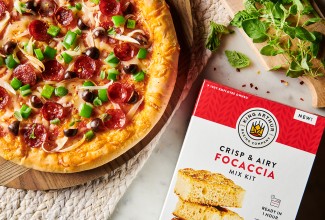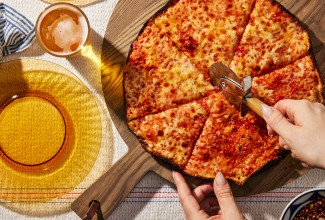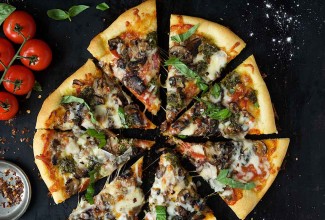-
Weigh your flour; or measure it by gently spooning it into a cup, then sweeping off any excess.
-
To make the crust: Place the dry ingredients (except the yeast) into the bowl of a stand mixer or large mixing bowl. Mix until thoroughly blended.
-
Place the warm water, 2 tablespoons (25g) olive oil, yeast, and a scant 1 cup of the dry mixture into a small bowl. Stir to combine; a few lumps are OK. Set aside for 30 minutes or so, until the mixture is bubbly and smells yeasty.
-
Add this mixture to the remaining dry ingredients and beat on medium-high speed for 4 minutes using a stand mixer or electric hand mixer. The mixture will be thick and sticky, but not elastic; it won't feel like regular yeast dough. Note: You must use an electric mixer to make this dough; mixing by hand doesn't do a thorough enough job.
-
Cover the bowl and let the dough rest for 30 minutes or so.
-
Pour the remaining 1 1/2 tablespoons (18g) olive oil into a cast-iron skillet that’s 10” to 11” diameter across the top, and about 9” across the bottom. Tilt the pan to coat the bottom with the oil. This heavy, dark pan will give you superb crust; but if you don’t have a cast-iron pan, use a 10” round cake pan, a 9” square pan, or other oven-safe, similar-sized, heavy-bottomed skillet.
-
Scrape the dough from the bowl into the pan. Starting at the center of the dough and working outward toward the edges, use your wet fingers to press the dough to fill the bottom of the pan.
-
Let the dough rest, uncovered, for 30 minutes.
-
While the dough is resting, place one rack at the bottom of the oven and one toward the top (about 4" to 5" from the top heating element). Preheat the oven to 375°F.
-
When you’re ready to bake the pizza, scatter about three-quarters of the mozzarella (a scant 1 cup) evenly over the crust. Cover the entire crust right to the edge, so the cheese will become deep golden brown and crispy as the pizza bakes. Dollop small spoonfuls of the sauce over the cheese (putting the cheese on first will prevent the top of the crust from getting soggy under the sauce) then sprinkle on the remaining mozzarella.
-
Bake the pizza on the bottom rack of the oven for 20 to 22 minutes, until the cheese is bubbling and the bottom and edges of the crust are golden brown (use a spatula to check the bottom). If the bottom is brown but the top still seems pale, transfer the pizza to the top rack and bake for 3 to 5 minutes longer. On the other hand, if the top seems fine but the bottom's not browned to your liking, leave the pizza on the bottom rack for another 2 to 4 minutes. Home ovens can vary a lot, so use the visual cues and your own preferences to gauge when you’ve achieved the perfect bake. You'll notice the pizza has shrunk away from the sides of the pan, and perhaps deflated a bit; that's OK.
-
Remove the pizza from the oven and place the pan on a cooling rack. Carefully run a spatula between the edge of the pizza and side of the pan to prevent the cheese from sticking as it cools.
-
If desired, sprinkle freshly grated hard cheese and fresh herbs over the hot pizza. Let the pizza cool briefly, and as soon as you feel comfortable doing so transfer it from the pan to a cooling rack or cutting surface. Serve pizza hot or warm.
-
Store any leftovers, well wrapped, in the refrigerator for a day or so; freeze for longer storage.
